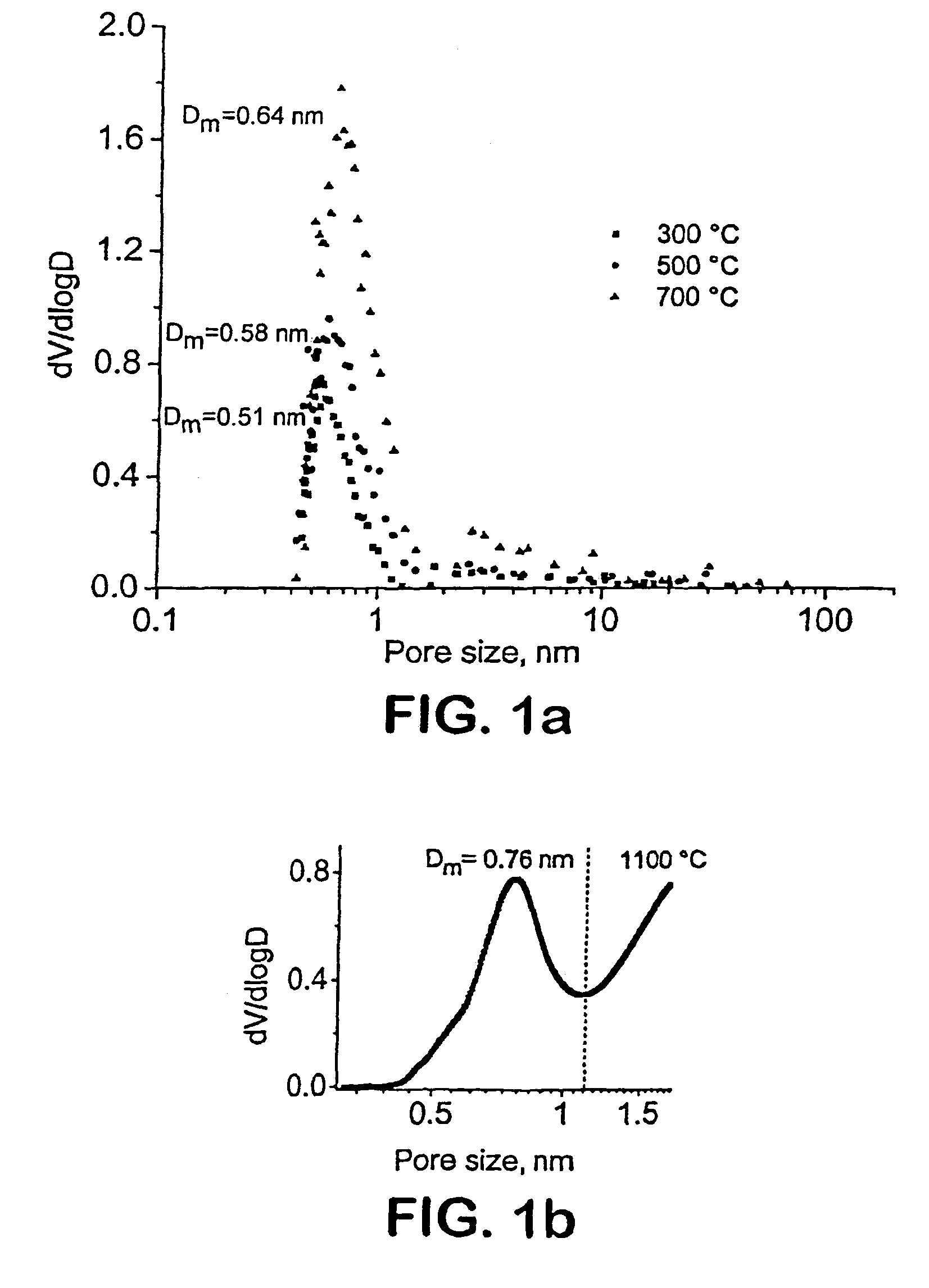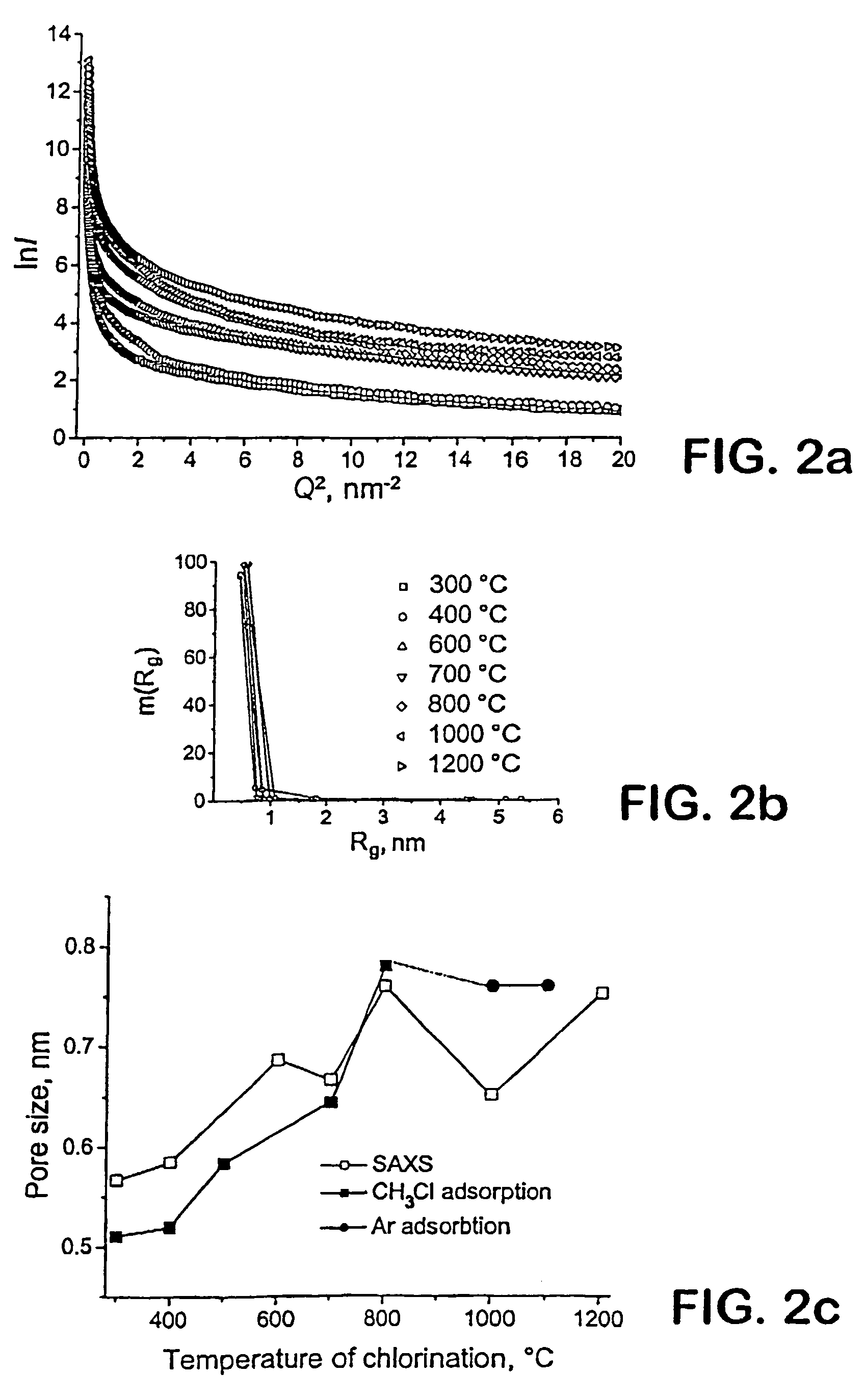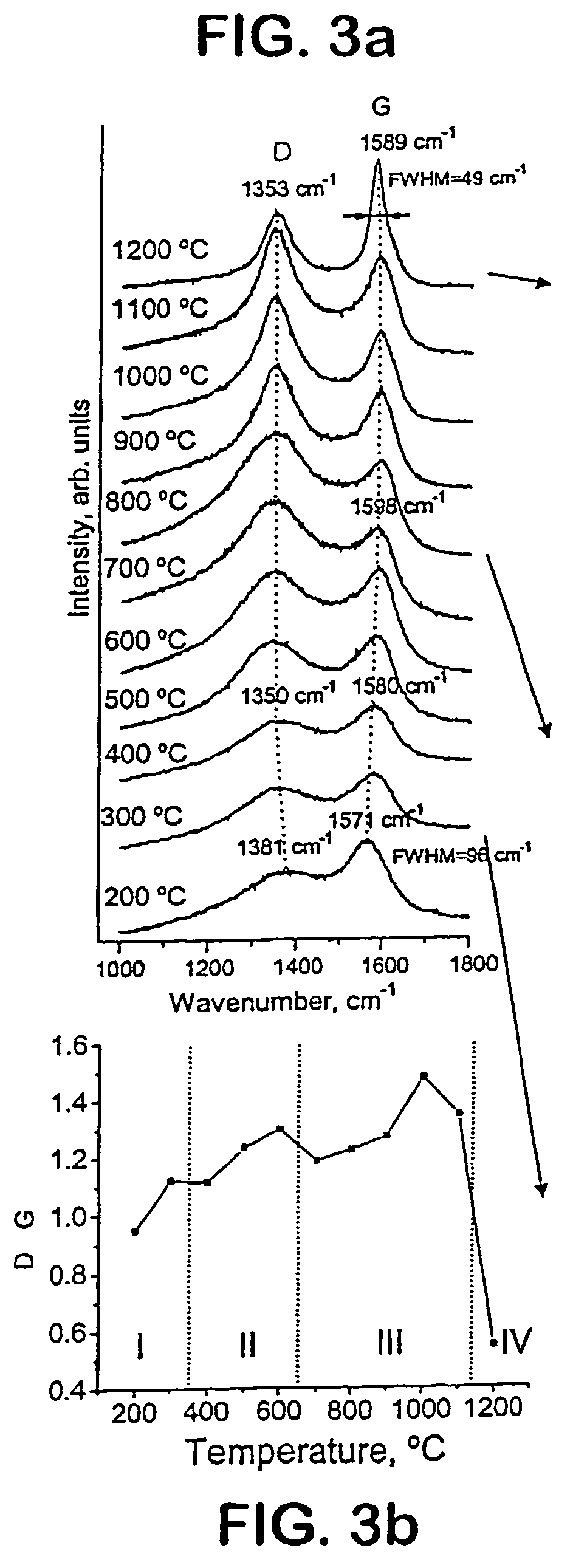Nanoporous carbide derived carbon with tunable pore size
a technology of tunable pore size and nanoporous carbide, which is applied in the direction of carbon compounds, inorganic chemistry, chemistry apparatus and processes, etc., can solve the problems of limiting the ability of molecules of different sizes to separate, unable to disclose the control of pore size or distribution, and inability to find pore sizes and fine tuning of pore sizes
- Summary
- Abstract
- Description
- Claims
- Application Information
AI Technical Summary
Benefits of technology
Problems solved by technology
Method used
Image
Examples
example 1
Calculation of Total Pore Volume
[0035]Total pore volume (VΣ) and average pore size were calculated from Ar and CH3Cl adsorption isotherms according to HK (Horvath and Kawazoe) theory. Specific surface area, according to BET (Brunauer, Emmet, and Teller) theory and nanopore volume, was calculated using t-plots based on the CH3Cl or Ar sorption isotherms. Nitrogen adsorption did not produce reliable results on samples with a pore size smaller than 1 nm. Ar adsorption (Micromeretics ASAP Pore Analyzer) was used to measure pore sizes above and under 1 nm, but the technique required long periods of time (5 days) for equilibration and could not produce the full distribution when the pore size approached 0.5 nm. The methyl chloride adsorption isotherms were used to measure the pore size below 0.7 nm assuming a slit pore shape.
example 2
Small-Angle X-Ray Scattering
[0036]Small-angle X-ray scattering (SAXS) was performed on a multi-angle diffractometer equipped with a Cu rotating anode, double-focusing optics, evacuated flight path and 2-D wire detector. Data was collected over the Q range 0.005-1.4 Å−1. Powder samples were loaded into 1.5-mm-diameter quartz capillary tubes and measured in transmission for 1 hour. The scattering intensity from an empty capillary was then collected and subtracted with sample absorption corrected. Expecting a finite but narrow
[0037]distribution of radii of gyration Rg, a modified Guinier analysis was employed to obtain the mean pore size and distribution. The fraction volume of pores of a given size was then estimated for each sample. By deconvoluting the experimental ln(I) vs. Q2 curves into components corresponding to pores with different Rg, distribution functions of Rg were found.
example 3
Determination of Structure of CDCs
[0038]Raman microspectroscopy (Renishaw 1000, Ar ion laser, 514.5 nm), transmission electron microscopy (TEM, JEOL 2010F), energy-dispersive spectroscopy (EDS) and X-ray diffraction (XRD, Siemens), were used to study the structure of CDC powders. In-plane crystal size of graphite La was calculated by the Tuinstra and Koenig equation: 1 / La=ID / Ig, where ID and Ig are intensities of disorder-induced D band and graphite G band, assigned to zone center phonons of E2g symmetry.
PUM
| Property | Measurement | Unit |
|---|---|---|
| mean nanopore diameter | aaaaa | aaaaa |
| temperature | aaaaa | aaaaa |
| diameter | aaaaa | aaaaa |
Abstract
Description
Claims
Application Information
 Login to View More
Login to View More - R&D
- Intellectual Property
- Life Sciences
- Materials
- Tech Scout
- Unparalleled Data Quality
- Higher Quality Content
- 60% Fewer Hallucinations
Browse by: Latest US Patents, China's latest patents, Technical Efficacy Thesaurus, Application Domain, Technology Topic, Popular Technical Reports.
© 2025 PatSnap. All rights reserved.Legal|Privacy policy|Modern Slavery Act Transparency Statement|Sitemap|About US| Contact US: help@patsnap.com



